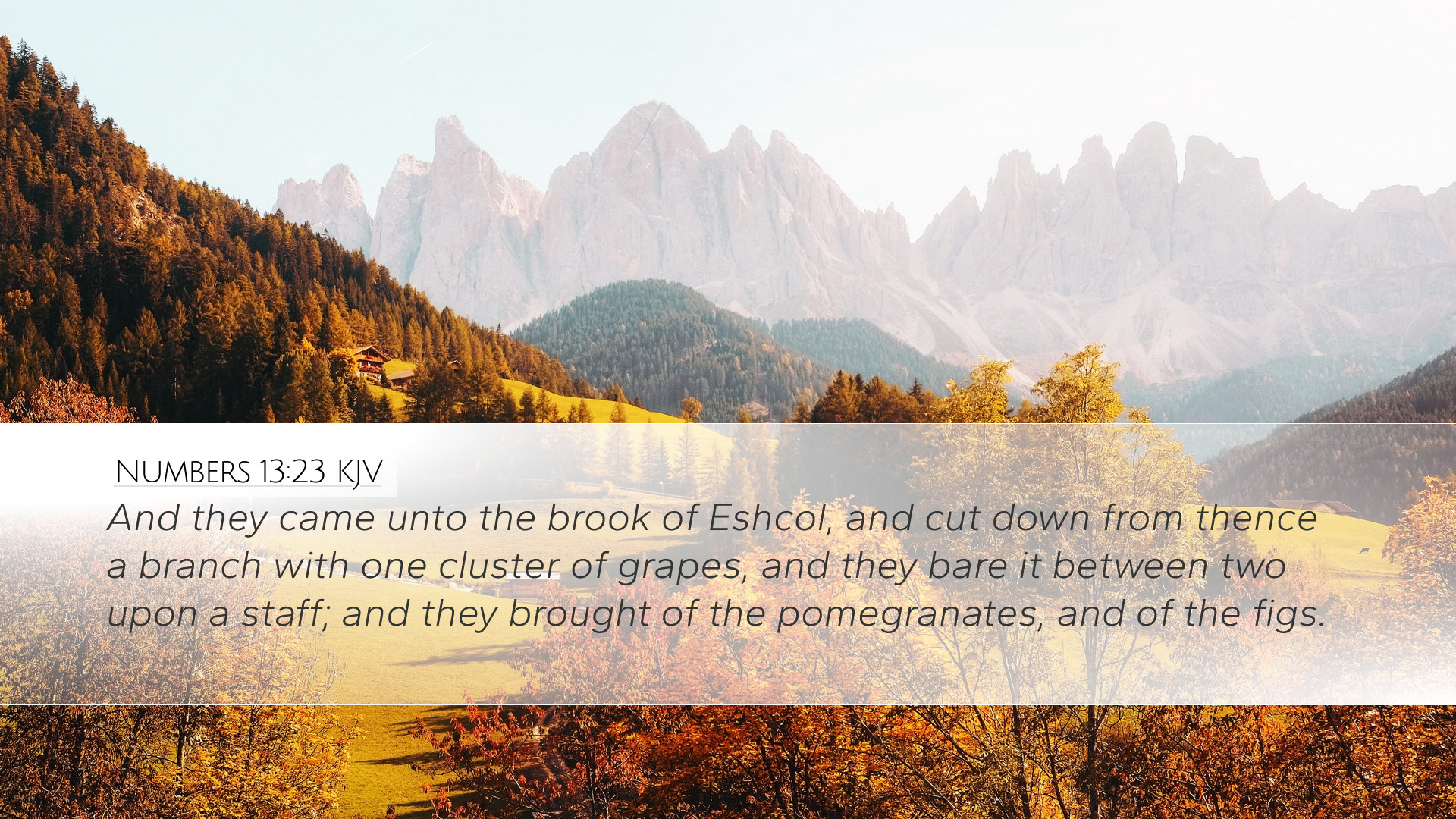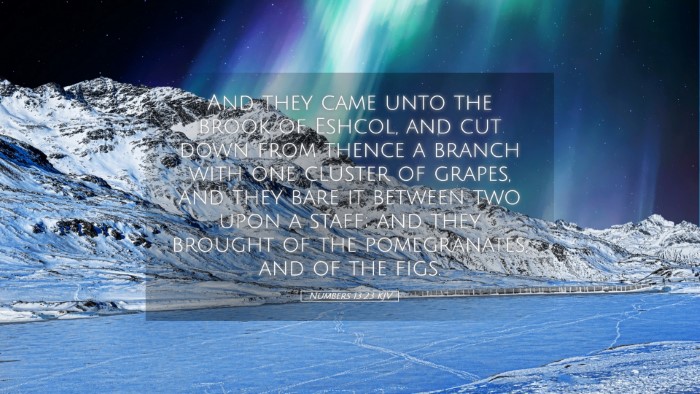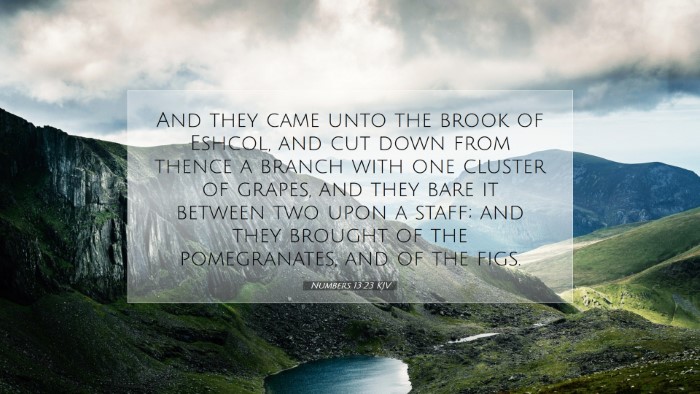Commentary on Numbers 13:23
Verse Context: Numbers 13:23 states, "And they came unto the brook of Eshcol, and cut down from thence a branch with one cluster of grapes, and they bare it between two upon a staff; and they brought of the pomegranates, and of the figs."
Introduction
This verse presents a vivid picture of the exploration of Canaan by the spies sent by Moses. It signifies the richness and fertility of the Promised Land, serving as both a literal and symbolic representation of God's blessings. The congregation's anticipation of entering a land of abundance is highlighted through the account of this one cluster of grapes.
Insights from Commentaries
Matthew Henry
Matthew Henry emphasizes the abundance found in the land of Canaan, noting that the descendants of Jacob were to inherit a land flowing with milk and honey. This passage illustrates not only the physical abundance of natural products but also represents spiritual sustenance that God provides to His people.
Henry mentions the meticulous nature of the spies’ exploration, indicating that they took the time to gather evidence of the land's bountiful resources. The act of bringing back such a large cluster of grapes suggests not only the physical weight of God’s promise but also the shared joy and administrative preparation involved in this celestial gift.
Albert Barnes
Albert Barnes discusses the significance of the brook of Eshcol, which has been interpreted as a place of great richness. The gathering of grapes signifies that the land was indeed as fruitful as God had promised to the Israelites. Barnes notes that the return of the spies with the cluster of grapes demonstrates the reality of the wealth and fertility of the land, reinforcing the theme of faith rooted in tangible evidence.
He suggests that the grapes are symbolic of the blessings in terms of abundance, suggesting that spiritual nourishment awaits those who obey God's commands. Barnes encourages readers to recognize these physical gifts as reflections of spiritual blessings.
Adam Clarke
Adam Clarke expounds upon the significance of the measurements taken during the expedition. He notes that the careful selection of fruits symbolizes the importance of discerning God’s promises. Clarke points out that the size of the grape cluster being carried by two men indicates an extraordinary yield indicative of divine provision.
In addition to physical blessings, Clarke emphasizes that the grace and mercy of God during this time extend beyond mere sustenance. The grapes represent the nurturing presence of God among His people, illustrating the idea that they are never abandoned in the wilderness. The rich yields are seen as a precursor to the spiritual harvest that will come when they enter the Promised Land.
Theological Implications
This verse holds significant implications for theology, especially in the context of God’s covenant with His people. The bounty of Canaan as demonstrated through the grapes symbolizes the fulfillment of God’s promises and His intention to bless His chosen ones abundantly.
Faith and Evidence
The act of gathering and returning with the cluster serves as a reminder of the necessity to ground our faith in observable evidence. Just as the Israelites were encouraged to note the physical fruits of their labor and God’s promises, believers today are called to examine the blessings of God in their own lives as a foundation for their faith journey.
Community and Sharing
The imagery of the two men carrying the large branch symbolizes the communal experience of faith. It reminds us that God’s blessings are not meant for individual consumption alone but to be shared within the community. This act of sharing reflects the core of Christian fellowship and mutual encouragement.
God's Faithfulness
The narrative urges believers to recall God’s past faithfulness as they navigate their present wilderness experiences. Just as the Israelites were reminded of their future inheritance, Christians are encouraged to look back on the clusters of blessings in their lives, serving as assurances of God's continued care and provision.
Conclusion
Numbers 13:23 encapsulates a powerful moment in the life of the Israelites, a testament to God's fidelity and abundance. The rich imagery serves to inspire faith and encourages a communal understanding of God's blessings. The ongoing lessons from this passage remain relevant for pastors, students, theologians, and Bible scholars as they seek to understand the intricate relationship between God's promises, community, and the demonstration of faith.


